-
 bitcoin
bitcoin $106680.127705 USD
0.67% -
 ethereum
ethereum $3615.722480 USD
-0.65% -
 tether
tether $0.999925 USD
-0.04% -
 xrp
xrp $2.550072 USD
5.91% -
 bnb
bnb $1002.572269 USD
-0.90% -
 solana
solana $168.746669 USD
1.08% -
 usd-coin
usd-coin $0.999832 USD
-0.03% -
 tron
tron $0.297244 USD
1.97% -
 dogecoin
dogecoin $0.182965 USD
0.71% -
 cardano
cardano $0.600432 USD
2.56% -
 hyperliquid
hyperliquid $41.439691 USD
-1.57% -
 chainlink
chainlink $16.548399 USD
2.40% -
 bitcoin-cash
bitcoin-cash $524.993680 USD
3.45% -
 stellar
stellar $0.302259 USD
4.10% -
 zcash
zcash $539.994871 USD
-16.31%
How to identify the false breakthrough of TRIX? What are the common patterns of inducing long positions?
TRIX, a momentum oscillator, helps traders spot false breakthroughs in crypto by analyzing crossovers, volume, and combining with RSI and MACD for confirmation.
May 23, 2025 at 12:49 pm
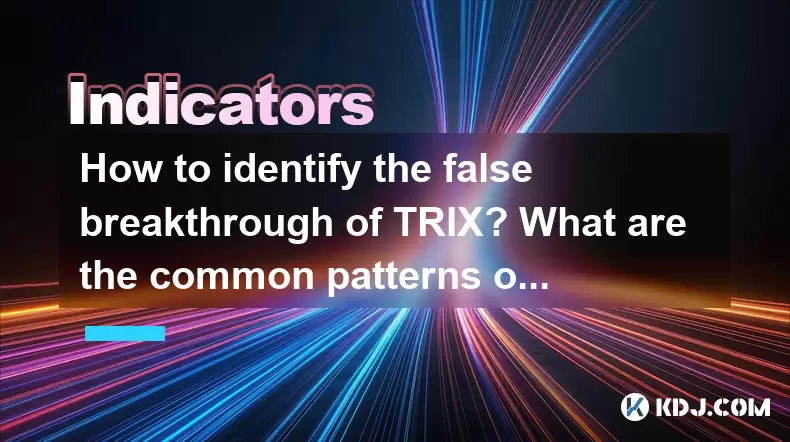
The TRIX (Triple Exponential Average) indicator is a momentum oscillator used by traders to identify potential trend reversals and overbought or oversold conditions in the cryptocurrency market. Identifying a false breakthrough with TRIX requires understanding the indicator's signals and combining them with other technical analysis tools. This article will guide you through the process of spotting false breakthroughs with TRIX and discuss common patterns used to induce long positions.
Understanding TRIX and Its Signals
TRIX is calculated using a triple-smoothed exponential moving average (EMA) of the price's closing values. The indicator oscillates around a zero line, with positive values indicating bullish momentum and negative values signaling bearish momentum. A signal line, often a 9-day EMA of the TRIX, is used to generate buy and sell signals.
When the TRIX line crosses above the signal line, it is considered a bullish signal, suggesting that the price may rise. Conversely, when the TRIX line crosses below the signal line, it is a bearish signal, indicating potential price declines. However, these signals can sometimes lead to false breakthroughs, where the price briefly moves in one direction before reversing.
Identifying False Breakthroughs with TRIX
To identify false breakthroughs, traders need to combine TRIX signals with other technical indicators and chart patterns. Here are steps to help you spot false breakthroughs:
Observe the TRIX line and signal line crossovers: A false breakthrough often occurs when the TRIX line crosses the signal line but fails to sustain the momentum. If the crossover happens, but the price quickly reverses, it may be a false signal.
Use volume analysis: A genuine breakthrough is often accompanied by increased trading volume. If the volume does not confirm the TRIX signal, it could be a false breakthrough.
Check for overbought or oversold conditions: The TRIX can also help identify overbought or oversold conditions. If the TRIX reaches extreme levels (e.g., above +0.5 or below -0.5) and then reverses, it might indicate a false breakthrough.
Combine with other indicators: Using other momentum indicators like the Relative Strength Index (RSI) or the Moving Average Convergence Divergence (MACD) can help confirm or refute TRIX signals. If multiple indicators do not align, it might suggest a false breakthrough.
Analyze chart patterns: Look for chart patterns like head and shoulders, double tops, or double bottoms. If a TRIX signal coincides with a reversal pattern, it could indicate a false breakthrough.
Common Patterns of Inducing Long Positions
Traders and market manipulators often use specific patterns to induce long positions in the cryptocurrency market. Understanding these patterns can help you avoid falling into traps and make more informed trading decisions. Here are some common patterns:
Pump and Dump: This is a classic manipulation tactic where a group of traders artificially inflates the price of a cryptocurrency by spreading positive rumors or buying large volumes. Once the price reaches a peak, they sell off their holdings, causing the price to crash. This pattern can be identified by sudden, unexplained price spikes followed by sharp declines.
Fake Breakouts: Similar to false breakthroughs, fake breakouts occur when the price briefly moves above a resistance level but fails to sustain the move. Traders may buy into the breakout, expecting further gains, only to see the price quickly reverse. This can be identified by monitoring price action around key resistance levels and using indicators like TRIX to confirm the breakout's validity.
Bull Traps: A bull trap is a false signal that suggests a bullish trend is starting when, in reality, the price is about to decline. This can be induced by a temporary price increase that lures in buyers before the price falls again. Bull traps can be identified by watching for price reversals shortly after a breakout and using indicators like TRIX to confirm the trend's direction.
Head and Shoulders Pattern: This reversal pattern can be used to induce long positions by creating a false sense of a continuing uptrend. The pattern consists of three peaks, with the middle peak (the head) being the highest and the two outer peaks (the shoulders) being lower. Traders may buy into the second shoulder, expecting the uptrend to continue, only to see the price fall after the pattern completes.
Combining TRIX with Other Indicators
To increase the accuracy of identifying false breakthroughs and manipulation patterns, it's essential to combine TRIX with other technical indicators. Here's how you can do it:
TRIX and RSI: The RSI measures the speed and change of price movements. When used with TRIX, it can help confirm overbought or oversold conditions. If TRIX indicates a potential breakthrough but RSI shows the opposite, it could be a false signal.
TRIX and MACD: The MACD is another momentum indicator that can help confirm TRIX signals. If both indicators show the same trend direction, it increases the likelihood of a genuine breakthrough. If they diverge, it might indicate a false signal.
TRIX and Bollinger Bands: Bollinger Bands measure volatility and can help identify potential breakouts or breakdowns. If a TRIX signal aligns with a price moving outside the Bollinger Bands, it could indicate a false breakthrough if the price quickly reverts within the bands.
Practical Example of Identifying False Breakthroughs
Let's walk through a practical example of identifying a false breakthrough using TRIX and other indicators:
Step 1: Analyze the TRIX and Signal Line: On a cryptocurrency chart, observe the TRIX line crossing above the signal line, indicating a potential bullish breakthrough.
Step 2: Check Volume: Look at the trading volume during the crossover. If the volume does not increase significantly, it might suggest a false breakthrough.
Step 3: Use RSI: Check the RSI to see if it aligns with the TRIX signal. If the RSI is in overbought territory (above 70) and then quickly drops, it could confirm a false breakthrough.
Step 4: Examine Chart Patterns: Look for any reversal patterns, such as a head and shoulders or double top, around the time of the TRIX signal. If a reversal pattern is present, it increases the likelihood of a false breakthrough.
Step 5: Confirm with MACD: Check the MACD to see if it confirms the TRIX signal. If the MACD line and signal line do not cross in the same direction as the TRIX, it might indicate a false breakthrough.
Frequently Asked Questions
Q1: Can TRIX be used effectively in highly volatile markets like cryptocurrencies?Yes, TRIX can be effective in volatile markets because it helps smooth out price fluctuations and identify underlying trends. However, it's crucial to combine TRIX with other indicators and volume analysis to increase its reliability in such environments.
Q2: How often should I check TRIX signals to avoid missing potential false breakthroughs?It's recommended to check TRIX signals at least daily, especially during periods of high market volatility. For more active traders, checking every few hours or using real-time alerts can help catch false breakthroughs as they occur.
Q3: Are there any specific timeframes that work better with TRIX for identifying false breakthroughs?TRIX can be used on various timeframes, but for identifying false breakthroughs, shorter timeframes like 1-hour or 4-hour charts are often more effective. These timeframes allow for quicker identification of false signals and can help traders react more promptly.
Q4: Can TRIX be used to identify false breakthroughs in other financial markets besides cryptocurrencies?Yes, TRIX can be applied to other financial markets like stocks, forex, and commodities. The principles of identifying false breakthroughs remain the same, but the specific settings and other indicators used may vary depending on the market's characteristics.
Disclaimer:info@kdj.com
The information provided is not trading advice. kdj.com does not assume any responsibility for any investments made based on the information provided in this article. Cryptocurrencies are highly volatile and it is highly recommended that you invest with caution after thorough research!
If you believe that the content used on this website infringes your copyright, please contact us immediately (info@kdj.com) and we will delete it promptly.
- XRP: Is This Crypto's Best-Performing Asset?
- 2025-11-11 06:45:01
- Navigating the Crypto Maze: Economic Schedules, Treasury Auctions, and the Bitcoin Beacon
- 2025-11-11 07:40:01
- AVAX & OP: Price Prediction, Open Interest, and Recovery Gains - What's Next?
- 2025-11-11 06:50:02
- Mantle, Anchorage Digital, and Institutional Custody: Bridging TradFi and DeFi
- 2025-11-11 05:20:01
- XRP ETF Hype and Remittix Rise: Navigating the Evolving Crypto Landscape
- 2025-11-11 05:25:01
- UK Stablecoin Regulation: A Pivotal Step Forward?
- 2025-11-11 05:05:01
Related knowledge

What's the best way to learn the TRIX indicator?
Nov 10,2025 at 12:39pm
Understanding the Basics of the TRIX Indicator1. The TRIX (Triple Exponential Average) indicator is a momentum oscillator designed to filter out short...
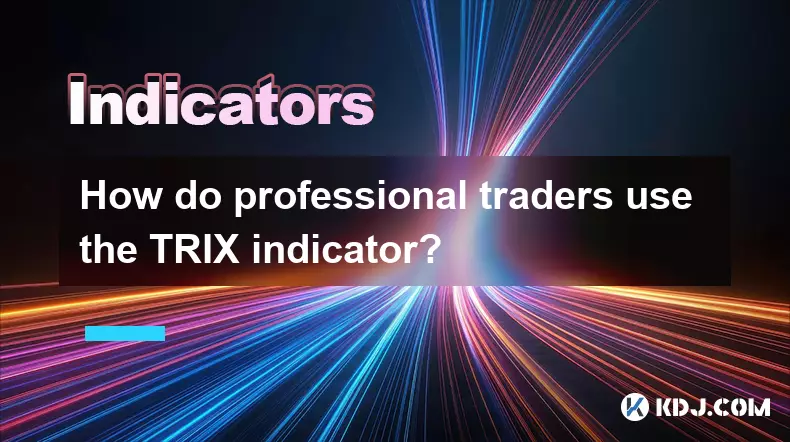
How do professional traders use the TRIX indicator?
Nov 06,2025 at 04:40pm
Understanding the TRIX Indicator in Crypto TradingThe TRIX (Triple Exponential Average) indicator is a momentum oscillator used by professional trader...
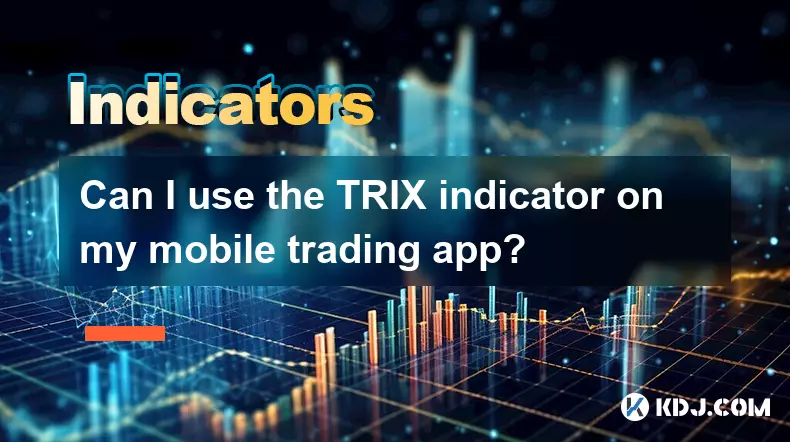
Can I use the TRIX indicator on my mobile trading app?
Nov 07,2025 at 07:40pm
The TRIX indicator, a momentum oscillator designed to filter out short-term fluctuations and highlight long-term trends, has become increasingly popul...
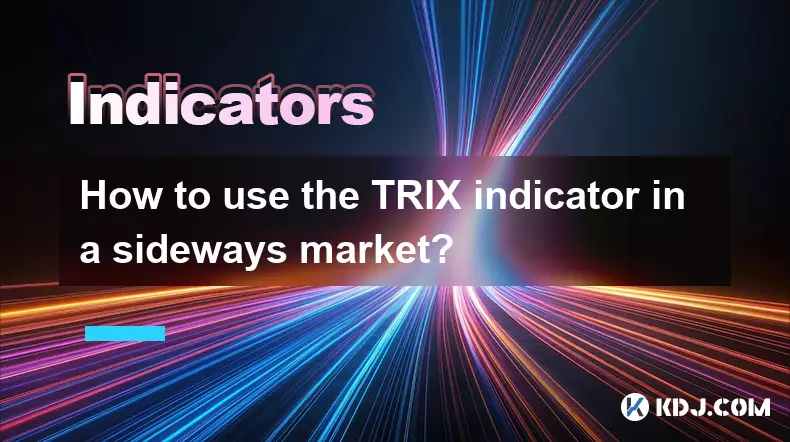
How to use the TRIX indicator in a sideways market?
Nov 10,2025 at 03:00pm
Bitcoin’s Role in Decentralized Finance Evolution1. Bitcoin remains the cornerstone of decentralized finance, serving as both a store of value and a b...
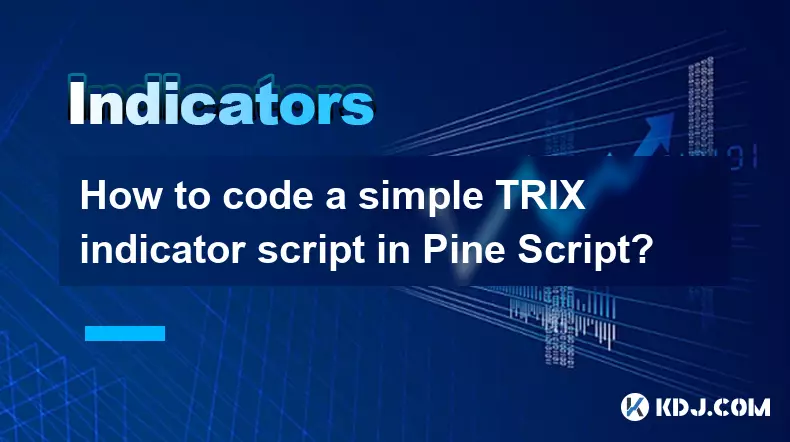
How to code a simple TRIX indicator script in Pine Script?
Nov 07,2025 at 06:20am
How to Code a Simple TRIX Indicator in Pine Script The TRIX (Triple Exponential Moving Average) indicator is widely used in cryptocurrency trading to ...
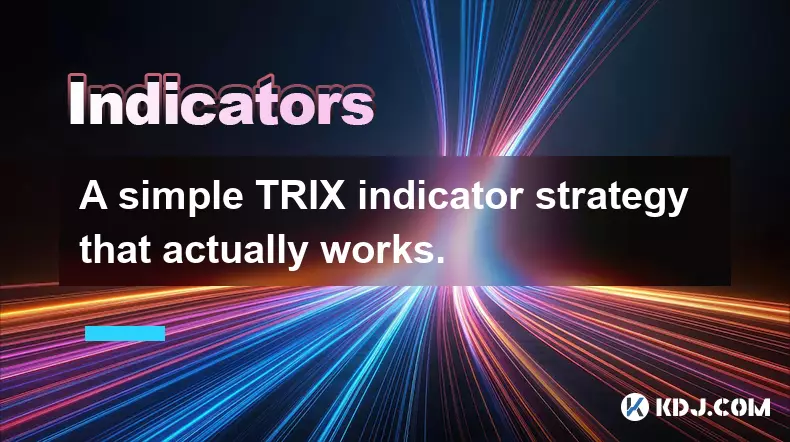
A simple TRIX indicator strategy that actually works.
Nov 08,2025 at 05:39pm
Understanding the TRIX Indicator in Crypto Trading1. The TRIX (Triple Exponential Average) indicator is a momentum oscillator designed to filter out s...

What's the best way to learn the TRIX indicator?
Nov 10,2025 at 12:39pm
Understanding the Basics of the TRIX Indicator1. The TRIX (Triple Exponential Average) indicator is a momentum oscillator designed to filter out short...

How do professional traders use the TRIX indicator?
Nov 06,2025 at 04:40pm
Understanding the TRIX Indicator in Crypto TradingThe TRIX (Triple Exponential Average) indicator is a momentum oscillator used by professional trader...

Can I use the TRIX indicator on my mobile trading app?
Nov 07,2025 at 07:40pm
The TRIX indicator, a momentum oscillator designed to filter out short-term fluctuations and highlight long-term trends, has become increasingly popul...

How to use the TRIX indicator in a sideways market?
Nov 10,2025 at 03:00pm
Bitcoin’s Role in Decentralized Finance Evolution1. Bitcoin remains the cornerstone of decentralized finance, serving as both a store of value and a b...

How to code a simple TRIX indicator script in Pine Script?
Nov 07,2025 at 06:20am
How to Code a Simple TRIX Indicator in Pine Script The TRIX (Triple Exponential Moving Average) indicator is widely used in cryptocurrency trading to ...

A simple TRIX indicator strategy that actually works.
Nov 08,2025 at 05:39pm
Understanding the TRIX Indicator in Crypto Trading1. The TRIX (Triple Exponential Average) indicator is a momentum oscillator designed to filter out s...
See all articles










































































